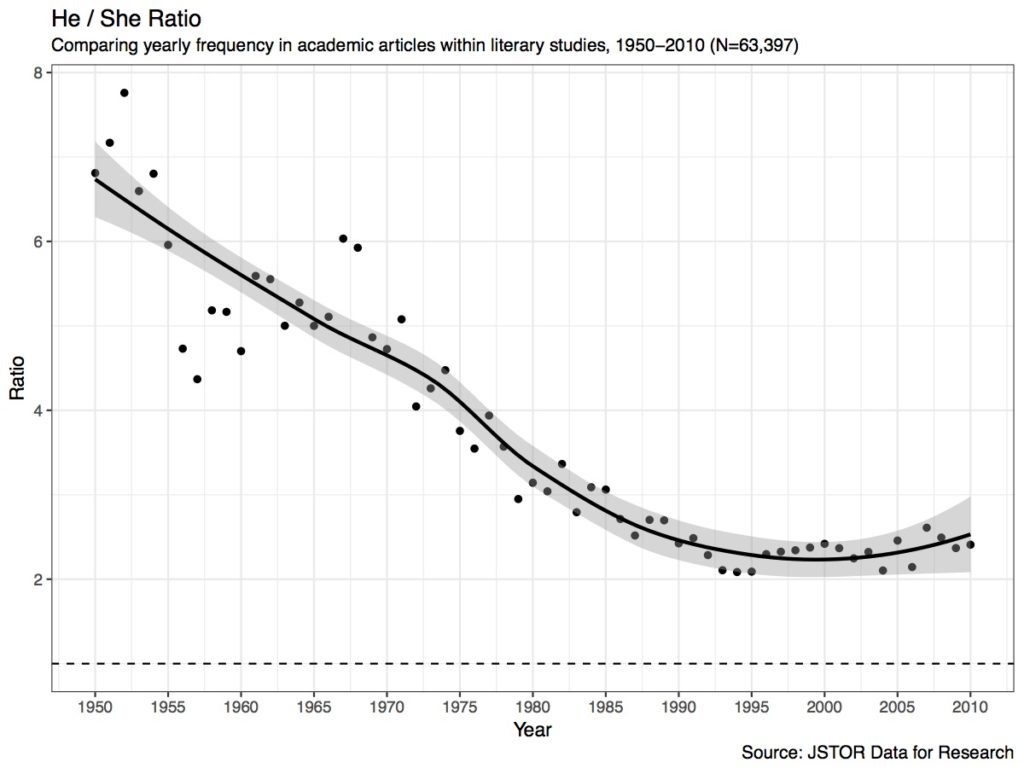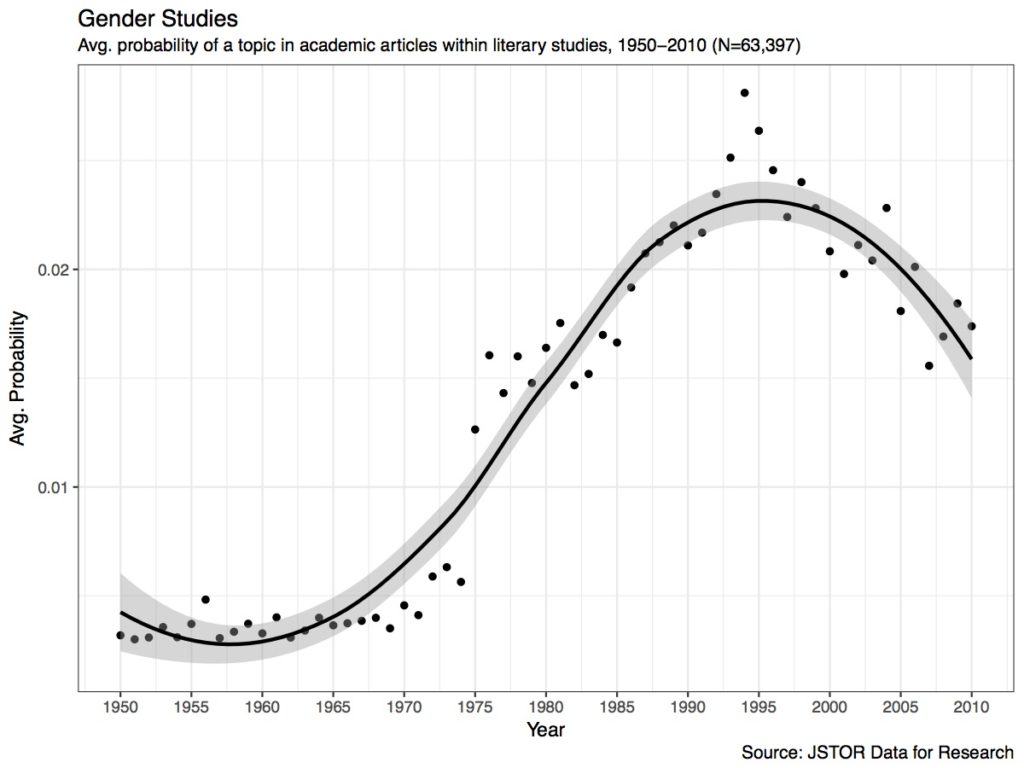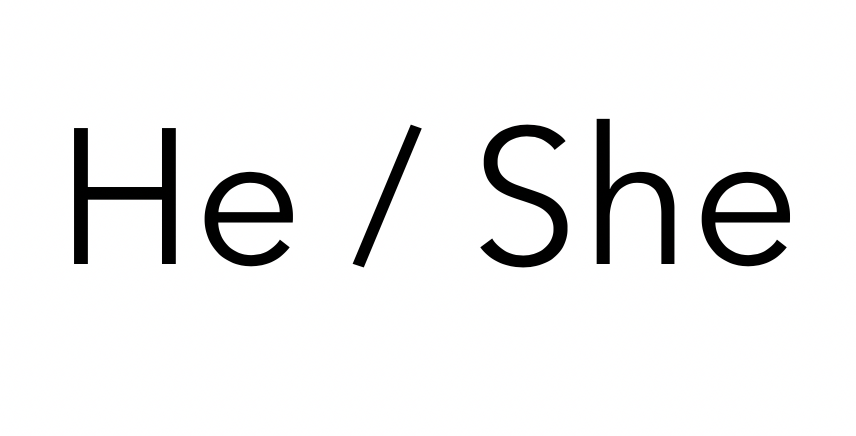Gender Trouble: Literary Studies’ He/She Problem
Pronouns have become a hot topic of late and I thought it would be interesting to explore their use in the new JSTOR data set that I have been working on that represents 60 years of literary studies articles.
Previous work has shown how men and women use personal pronouns at differing rates (you can guess how). I wanted to see whether over the past 60 years an assumed bias towards masculine pronouns in the field might have subsided with the rise of gender studies and the entry of more women into the profession.
Unfortunately not.
Here is a graph of the ratio of the yearly frequency of he to she. As you can see “he” is about seven times more likely to be invoked than “she” in the early postwar period. This declines precipitously in the 1970s and 80s with the rise of gender studies (see Fig. 2 below). But it never achieves parity. In fact it never even comes close. It plateaus at the 2:1 ratio, which we have begun calling the “golden mean of patriarchy” in our lab (the dotted line = equality). You can find this ratio in numerous cultural spheres — Hollywood movies, characters in novels, newspaper bylines, etc. It’s the 2 men for every 1 woman rule. It’s so common it is worth testing what happens to industries / fields when the ratio drops below this. If it is so common, then something dramatic must happen when it breaks.

This ratio does not mean that gender is not an important topic of interest within literary studies. As you can see from the results of a topic model (k=60), gender rises considerably in the late 70s and 80s as a topic (the top words of the topic are women, female, woman, male, womens, men, gender, feminist, sexual, sex). This topic is one of the most semantically stable topics in the model (see my previous post for a discussion) and also has a relatively high average probability over time compared to other topics. However, it also seems to decline strongly in the 2000s, roughly equivalent to when the he/she ratio plateaus.

While more work could be done to understand what happens to “gender” in literary studies, it is important to emphasize two things here. One is the decline in gender as an explicit topic of focus in the field and two is the persistence of masculine pronouns dominating the field. While they are not equivalent — to discuss “men” and “women” is different from focusing on a female-identified individual — together they indicate trouble with respect to gender.
Like numerous other cultural fields, literary studies has not achieved gender parity when it comes to an emphasis on the individuals discussed, whether these are authors (literary or critical) or characters. As I have shown elsewhere, women authors are under-represented in a majority of sampled publications from the field. This might be one of the factors driving the glass ceiling of female representation in articles.
However simple an analysis of pronouns may seem, it offers a straightforward diagnostic of lingering bias in the field, one that appears to be stable since the mid-1990s. It shows that our field has a long way to go to live up to its progressive ideals.


1 Comment
Join the discussion and tell us your opinion.
[…] little while back I posted on the unmoving ratio between male/female pronouns in a data set of ~60,000 articles in literary studies. The ratio has been stable at about 2:1 since […]